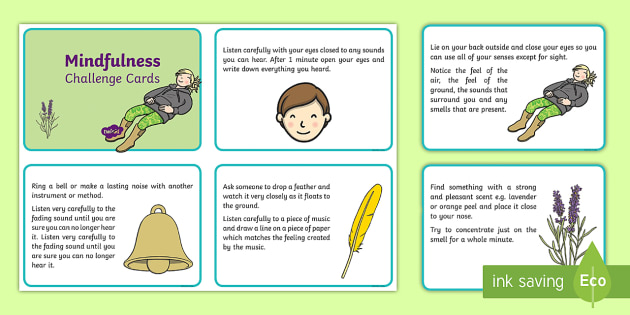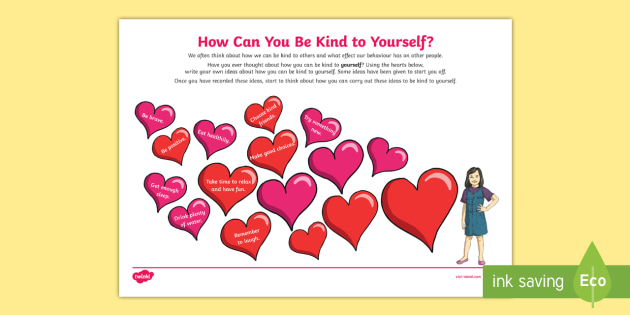Wellbeing Support
Activities to Support Wellbeing
Here are some activities you could try to support positive wellbeing:
Mindfulness calendar: daily five-minute activities


Mindfulness challenge cards - Choose one of these activities to support mindfulness.
Wellbeing Bingo - Play this game on your own or with your family and friends.
Be Kind to Yourself activity - Think of different ways you can be kind to yourself.
Useful links
- Every Mind Matters: a public health England and NHS site to help people take simple steps to look after their mental health, improve their mental wellbeing and support others.
https://www.nhs.uk/oneyou/every-mind-matters
- Family Lives is a website offering practical advice and ideas, as well as free, confidential helpline.

https://www.familylives.org.uk/
- Essex Child and Family Wellbeing Service. Essex County Council, the NHS, Virgin Care and Barnardo’s provide a range of child and family services throughout Essex.
https://essexfamilywellbeing.co.uk/
5 ways to Support Positive Wellbeing
Take Notice
- Listen to and learn to identify different bird song. Use this RSPB bird song identifier to help work out which song goes with which bird.
- Cloud spotting - looking for shapes.
- Patterns in nature.
- Listening to dawn chorus.
- Sit quietly outside and listen for sounds - how many can you hear?
- Growing something and watching it, appreciate.
- Lie on the ground be still and think about what you can feel.
- How many colours can you see?
- Spotting bird formations.
- Pay attention to an insect, watch its journey closely.
- Watch the flow of water and listen to the sound focus on the shapes that the water makes.
- How many different leaf shapes can you see?
- Bark rubbing - feel the bark and take a rubbing
- Woodland bathing - sit in a wooded area, be still and enjoy the sounds, colours and smells.
Get Creative
- Natural art - using objects from nature (blossom, twigs, stones, leaves, sand, shells etc.) to create a design or pattern. Take pictures to preserve this natural art work!
- Pressing flowers in the traditional way using books or using a microwave for a quicker way to dehydrate the flowers. Create pictures/cards using the flowers (and give to others!)
- Research then design and create a garden/flower bed to attract wildlife (butterflies, bees, birds). This can be a small patch or even pots – the bigger the better for pots, as they take less looking after.
- Sketch or paint outdoors to capture natural landscapes/flowers/birds.
- Listen to and compose music with a natural theme e.g. linked to weather, water, woodland sounds.
- Create bug hotels, hedgehog houses and bird feeding stations to attract wildlife.
- Create a miniature garden on a plate - with gravel, pine cones, succulents, twigs, leaves etc.
- Make a rainmaker by recycling an old plastic bottle and filling it natural objects - pebbles, twigs, gravel etc.
- Create a story stick using elastic bands on a stick and then collect items on a walk through a natural environment in order to retell the adventure.
Be Active
- Nature walk with list of specific things to find (a treasure or scavenger hunt) e.g. a stone that’s not round, feathers of various colours and sizes, blossom, specific shape or colour leaf, something from each colour of the rainbow and/or school colours – record your treasure on digital camera/tablet.
- Make up or adapt a game using natural materials.
- Litter picking/collecting – also a good way of connecting with others!
- Make a hopscotch grid using things from nature - twigs, pebbles etc. and play hopscotch together
Give to others
- Grow herbs (especially mint) in little pots and give as a small gift to family or community members.
- Be kind to nature (give to wildlife) build a bug hotel, squirrel or bird feeder.
- Litter pick for your community.
- Make daisy chains or weave willow bands to give to friends or family members.
- Share one of your favourite places with someone, explore it with your senses. Take a friend to your favourite place… hopefully somewhere they have never been.
- Choose one of the activities from the Get Creative section – make something to give to a friend or relative!
Connect with others
- Growing seeds/plants with friends or family.
- Growing a fast growing plants e.g. cress (possibly in egg shell?) and share with family online via Zoom/Facetime. Have some fun by drawing a face on the egg and then cutting crazy cress hairstyles!
- Make picture/collage using natural materials
- Listening game with a partner – how many nature sounds can be heard?
- Birdwatching - or insect watching - with someone.
- Gardening for someone else or a community garden/allotment with a group/friend.
- Photograph some nature and make your pictures into a collage for a card send to friend/family.
- Plantlife Survey – take part in this organisation's Cowslip Survey and connect with hundreds of others who care about the environment across UK.
- Listen together to stories and poems about animals, minibeasts, birds - children could suggest their favourite stories about nature to add to the connection.
